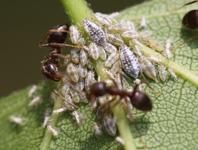Abstract
Traditionally four subfamilies have been recognised within Atyidae (Holthuis 1986) based on an expanded version of Bouvier’s (1925) “série” concept, namely Atyinae De Haan, 1849, Caridellinae Holthuis, 1986, Paratyinae Holthuis, 1986, and Typhlatyinae Holthuis, 1986. The distinction between these subfamilies and the assignment of genera to them was based on the relative development of exopods on the pereiopods, the branchial formulae, pigment presence and reduction of eyes, the number of spines on the uropodal diaresis, as well as the shape and proportions of the chelipeds. In recent years, this subfamily division has not been consistently used in primary taxonomic literature (see Richard et al. 2012) and a growing body of phylogenetic studies have cast considerable doubt on their relevance to common ancestry. This phylogenetic work recently culminated in the comprehensive study of von Rintelen et al. (2012), who included 32 genera (out of the 42 then known) in analyses of one mitochondrial (16S) and two nuclear genes (28S, H3). They found no molecular support to continue to recognise subfamilies as phylogenetic realities, and suggested using informal group names for the five deep clades they recovered.

